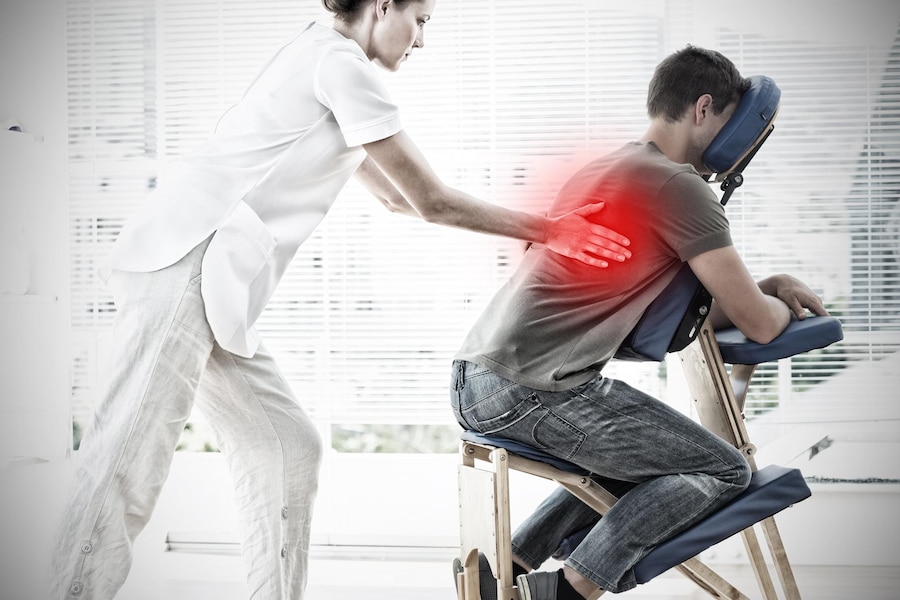In all these environments one thing holds true – almost all athletes will at some point suffer an injury. What has been a massive learning curve for me is seeing the gap in knowledge about strength and conditioning that most physios have (and also that strength and conditioning coaches have with rehab!). Far too often I see physios amazing at the diagnosis and acute phase of an injury, but the waters quickly turn murky when we look to get athletes returning to training and full performance. I think physios would be far better equipped to work with athletes and active people if they had a basic understanding of periodisation, the rehab and return to play process, and exercise progressions. Hopefully in this article I can provide you with some knowledge in these areas!
But first, I can only dive so deep in a blog. If you’d like to learn more about designing optimal rehab programs for your active patients / athletes, be sure to check out Sam Blanchard’s excellent Masterclass – Clinical Reasoning in Rehab.
single-image
Periodisation
I may actually lose it if I see one more green theraband external rotation given to an athlete with shoulder impingement! While this exercise has its benefits, the classic rehab prescription of every corrective done for 3 sets x 10 reps to the end of time does not see benefits for long! Just like in strength and conditioning, rehab needs to involve progressive overload. While activation and capacity work is important in the acute stage, I have rarely seen a physio look to expand their correctives past this point. Or even live dangerously and move to that blue theraband after two weeks!
Our correctives should look to slowly add load and change over time, challenging the individual as they progress through their rehab. This goes not only for the correctives but also for gym, field (speed and agility), or sport-specific needs such as contact in rugby league. Once an individual has developed some work capacity they should look to develop strength and power in their athletic needs rather than shy away in the corner of the gym with the theraband in rehab purgatory. Both strength and conditioning coaches and physios need to understand the definition of strength and power, as well as understand exercise prescription to optimise these qualities. I’ll delve into this a bit more later in the article.
S+Cs and Physios Should Work Together!
For every injury I firmly believe that both the physio and strength and conditioning coach need a solid understanding of the rehab stages, exit criteria for each stage based on performance outcomes NOT time, and a plan A and B for integrating the individual back to training. During all of the rehab stages the strength and conditioning coach and physio should look to be working together, not in their own silos. The injured athlete is not the responsibility of the physio alone. Even from the very early stages an S+C should be involved in how to best train around the injury and maintain as many aspects of the athlete’s performance as possible. For example, if an athlete has an MCL injury, the S+C should still be helping with their upper body strength program and cardio/conditioning. And perhaps offer exercise alternatives for the lower body that are more knee friendly, for example hip thrusts or Romanian deadlifts. At the same time, when an athlete is integrating back into training they should not be the sole responsibility of the S+C coach. During this time a physio should be checking things like pain levels, swelling, integrity of the injured area through clinical tests, etc.
When shared decision-making and open lines of communication are in place between a physio and S+C coach, this is when the best outcomes are seen for the athlete. It is just such a shame that this is normally only implemented well at the professional level.
The Rehab and Return to Play Process
Typically we look at breaking down an athletes’ rehab into four phases.
Phase One (physio bread and butter):
In this phase we look to improve active range of motion, mitigate pain and swelling, and introduce correctives and exercises that don’t compromise healing and promote capacity of the supporting tissue. In this phase the green theraband is in its prime! In our exercise prescription the load stays low but the volume is high (think 3-4 sets of 10-15 reps).
Phase Two (strength):
Throw away the theraband and bring out the dumbbells, barbells and machines! At this stage we look to progressively strengthen the injured area. Think progressive overload with your exercise prescription. The volume should start moderate and slowly drop, while the intensity slowly increases (e.g. week 1-2 of this phase – 3 x 8 reps, week 3-4 – 3 x 6, week 5-6 – 3 x 4). In this phase the athlete should be using weights/loads that take them close to failure, i.e. only have 1-2 more reps ‘in the tank’ at the end of the set.
Phase Three (power):
Time to drop the weight but move the bar faster now! Think ballistic training, plyometrics, banded resistance training, and complex and contrast methods (e.g. supersetting a heavy exercise like the squat, with a light exercise with a similar movement pattern like the box jump). In this phase our exercise prescription looks to build global power, i.e. express the strength attained from the last phase as rapidly as possible! 3-4 sets of 3-5 reps with long rest periods of 3min+ between sets are best for power development. No, sets of 20 box jumps is NOT power training.
Phase Four (training integration and return to sport):
Depending on the injury and the co-ordinating physio and strength and conditioning coach, there should be RTS criteria that the athlete has to meet before integrating back into training. It is a good idea to build up to full training over several weeks, as jumping straight back into full training after only doing rehab work will result in a big spike in training load, placing the athlete at an elevated risk of injury. For a soccer/football athlete returning from an ACL rupture for example, they might start off joining in the warm up, basic passing drills and drills involving pre-determined change of direction, while sitting out of any small sided games or reactive drills. In the gym and on-field during this phase, our exercise prescription looks to include sport-specific drills, and prep athletes for the demands of their competition.


